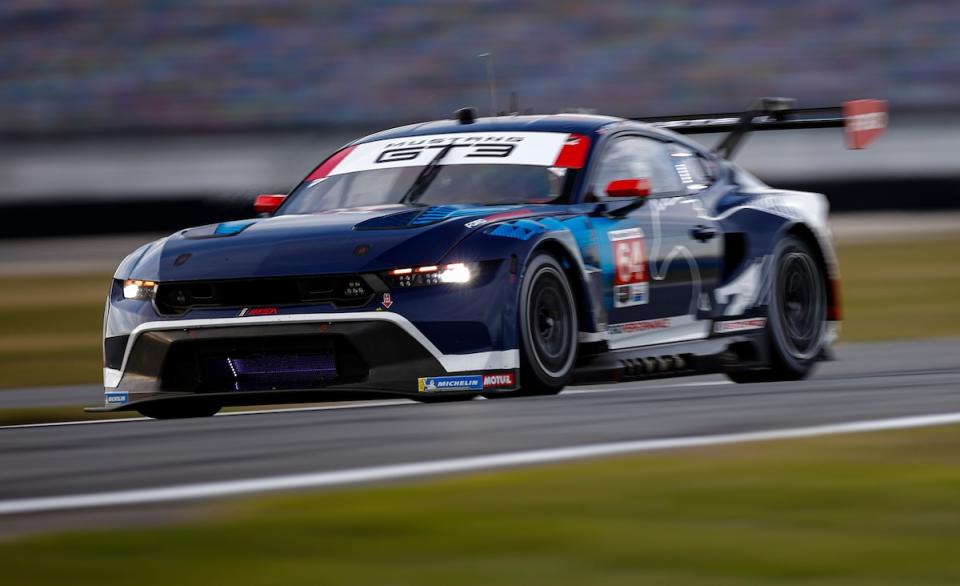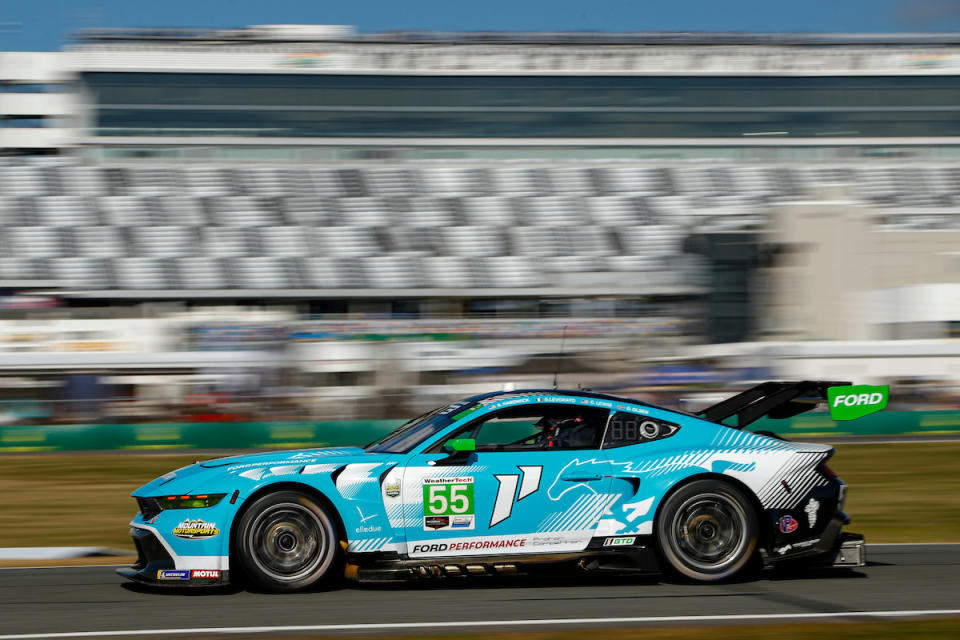Ford’s new GT3 Mustang ready for Daytona launch

The Ford Mustang GT3 has its worldwide competition debut in this weekend’s Rolex 24 At Daytona. It’s one of two all-new GT3 cars introduced this year, the other being the Chevrolet Corvette Z06 GT3.R from Ford’s Motown rival. A few days ahead of the first official session, Larry Holt, executive vice president of Multimatic Special Vehicle Operations, the Mustang GT3’s developer and builder, described his mood as “trepidatious.”
“No prediction. It’s a crapshoot of a race,” he noted. “On the list of the things that are important here to win this race, having the best car, fastest car, isn’t right at the top; it’s really about execution.”
And while Holt has something to say about execution because he’ll be managing strategy on the pit box for Ford Multimatic Motorsports, he also believes that if the company hasn’t produced the fastest car, it may have produced the best GT3 car, where the fact that customers will race the car, and in many cases with gentleman drivers, influences the definition of greatness.
“You’ve got to make it benign. We overachieved like crazy on aero and then we pulled it back, by making it less sensitive to pitch, roll, ride height,” he explained. “The car’s not [squirrely] on the brakes, where it’s pinned the front, and now it’s oversteering … you don’t have any of that.
“The other thing we did was we spent a lot of time on serviceability, because we know there are going to be a lot of privateer teams. We could have left the whole front and the back of the car there with the crash rails, but we know from experience from others, if you stick one of them in the wall, and the front crash rail is all bent up and into the fire wall, now you’ve got to get a new tub. We kept the middle, which the rules allow, and there’s a subframe on the front and a subframe on the rear. And if you whap that thing in the wall, you take the subframe off and you put it on — you don’t replace the whole chassis.”
Proton Competition will be out to prove the Mustang GT3’s chops in GTD. Jake Galstad/Lumen
The key in GT3 racing for most series — including IMSA GTD, where Proton Competition is running the No. 55 Mustang GT3 — is that the car must be easy for the gentleman driver to make lap time. That’s why Holt talks about overachieving in certain areas so it can be brought back and operate in a wide window. And while Harry Tincknell, who will drive the No. 64 Mustang in GTD PRO with Mike Rockenfeller and Christopher Mies, is a pro, he believes that Multimatic hit the mark on drivability.
“I feel like the one of the big takeaways we found in all the tests once we got the Bronze drivers in, is how close they are to the pace on this car compared to the respective brands that they have driven before,” Tincknell said. “I think this car requires smoother driving style. It rewards consistency over gung-ho sending the car in. The more oversteer you can engineer into the car in a setup, the faster it goes; if you’ve got any understeer, you’re slowing that car.
“For the Bronze drivers, that’s tricky for them. When they’re coming into the Bus Stop, and the thing’s stepping out … Our car’s very, very different — much more secure rear. A Bronze driver would not push the ultimate limit, say, on the entry as much as a pro would. And therefore their limit is actually much closer to the car’s overall limit compared to other brands.”
The drivers, most of whom were involved in the Ford GT program in GTLM and GTE, are all very excited to get the racing underway and make a mark.
“The potential to make history is is obviously here,” said longtime Ford driver Joey Hand, who will be joined by Dirk Müller and Frederic Vervisch in the No. 65. “I’m not saying we’re going to win the first race but, you know, if we win a race we’ve made history running a Mustang in IMSA There’s just a lot of stuff to go with it.”

 Yahoo Autos
Yahoo Autos 
